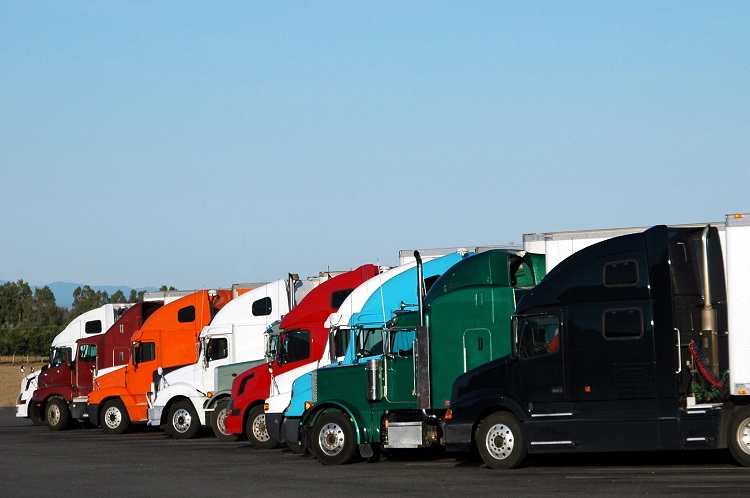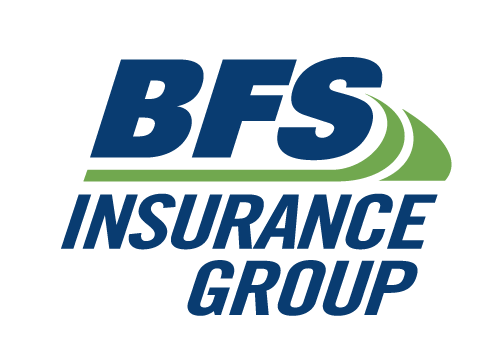 In my role as Trucking Specialist at Acuity, I have the opportunity to speak with many motor carriers. As with any new regulation, I've found that the ELD mandate has produced some frustration within the trucking industry. However, by and large, it seems most motor carriers have adopted this technology with open arms. Truckers are telling me that they see several benefits to ELDs, including:
Increased efficiency. Once a driver learns the ELD system, it can make the logging process easier, saving time and frustration. ELDs keep accurate records of duty status, reduce paperwork burden on the driver, and help ensure operations can trust the data they’re receiving in real time.
Easier tracking. By automatically tracking hours spent and duty status throughout the day, ELDs help drivers focus on safe driving and hauling freight rather than watching the clock. ELDs also help motor carriers and drivers keep accurate record of any time the truck isn’t moving, such as time spent loading and unloading, as well as the effects of traffic and weather-related events. This information helps motor carriers and drivers efficiently manage their time and provides proof of how time was spent. Shippers and receivers that waste a driver’s time and a motor carrier’s equipment with "detention time," can now be presented with hard documentation and either fix the problem or be charged accordingly.
Improved compliance. Because hours-of-service (HOS) records are stored electronically with ELDs, enforcement officials can quickly verify whether a driver is compliant with HOS rules and return the driver to driving status more efficiently. ELD implementation also has benefits from a safety standpoint, ensuring driver compliance with HOS rules that are designed to minimize driver fatigue.
With that said, I have also heard some concerns regarding ELDs. Complying with ELD regulations comes at a cost. Paper logs are cheaper initially. Also, because ELD systems automatically start tracking time when the driver starts driving, motor carriers need to be more aware of scheduling to ensure they can continue meeting customer needs and return drivers home while maintaining compliance with hours-of-service rules.
In addition, motor carriers and drivers may need to refresh themselves on two logbook rules they may not have used in the past—on-duty yard move and personal conveyance. ELDs allow the user to edit all lines in the record of duty status (RODS) except the drive line. However, drivers can use these two rules to save and protect drive time when permitted.
Overall, carriers are finding ELDs have several benefits. Many forward-thinking motor carriers are positioning themselves for how they can use this technology to effectively meet customer and employee needs and prepare themselves for the changing future.
In my role as Trucking Specialist at Acuity, I have the opportunity to speak with many motor carriers. As with any new regulation, I've found that the ELD mandate has produced some frustration within the trucking industry. However, by and large, it seems most motor carriers have adopted this technology with open arms. Truckers are telling me that they see several benefits to ELDs, including:
Increased efficiency. Once a driver learns the ELD system, it can make the logging process easier, saving time and frustration. ELDs keep accurate records of duty status, reduce paperwork burden on the driver, and help ensure operations can trust the data they’re receiving in real time.
Easier tracking. By automatically tracking hours spent and duty status throughout the day, ELDs help drivers focus on safe driving and hauling freight rather than watching the clock. ELDs also help motor carriers and drivers keep accurate record of any time the truck isn’t moving, such as time spent loading and unloading, as well as the effects of traffic and weather-related events. This information helps motor carriers and drivers efficiently manage their time and provides proof of how time was spent. Shippers and receivers that waste a driver’s time and a motor carrier’s equipment with "detention time," can now be presented with hard documentation and either fix the problem or be charged accordingly.
Improved compliance. Because hours-of-service (HOS) records are stored electronically with ELDs, enforcement officials can quickly verify whether a driver is compliant with HOS rules and return the driver to driving status more efficiently. ELD implementation also has benefits from a safety standpoint, ensuring driver compliance with HOS rules that are designed to minimize driver fatigue.
With that said, I have also heard some concerns regarding ELDs. Complying with ELD regulations comes at a cost. Paper logs are cheaper initially. Also, because ELD systems automatically start tracking time when the driver starts driving, motor carriers need to be more aware of scheduling to ensure they can continue meeting customer needs and return drivers home while maintaining compliance with hours-of-service rules.
In addition, motor carriers and drivers may need to refresh themselves on two logbook rules they may not have used in the past—on-duty yard move and personal conveyance. ELDs allow the user to edit all lines in the record of duty status (RODS) except the drive line. However, drivers can use these two rules to save and protect drive time when permitted.
Overall, carriers are finding ELDs have several benefits. Many forward-thinking motor carriers are positioning themselves for how they can use this technology to effectively meet customer and employee needs and prepare themselves for the changing future. In my role as Trucking Specialist at Acuity, I have the opportunity to speak with many motor carriers. As with any new regulation, I've found that the ELD mandate has produced some frustration within the trucking industry. However, by and large, it seems most motor carriers have adopted this technology with open arms. Truckers are telling me that they see several benefits to ELDs, including:
Increased efficiency. Once a driver learns the ELD system, it can make the logging process easier, saving time and frustration. ELDs keep accurate records of duty status, reduce paperwork burden on the driver, and help ensure operations can trust the data they’re receiving in real time.
Easier tracking. By automatically tracking hours spent and duty status throughout the day, ELDs help drivers focus on safe driving and hauling freight rather than watching the clock. ELDs also help motor carriers and drivers keep accurate record of any time the truck isn’t moving, such as time spent loading and unloading, as well as the effects of traffic and weather-related events. This information helps motor carriers and drivers efficiently manage their time and provides proof of how time was spent. Shippers and receivers that waste a driver’s time and a motor carrier’s equipment with "detention time," can now be presented with hard documentation and either fix the problem or be charged accordingly.
Improved compliance. Because hours-of-service (HOS) records are stored electronically with ELDs, enforcement officials can quickly verify whether a driver is compliant with HOS rules and return the driver to driving status more efficiently. ELD implementation also has benefits from a safety standpoint, ensuring driver compliance with HOS rules that are designed to minimize driver fatigue.
With that said, I have also heard some concerns regarding ELDs. Complying with ELD regulations comes at a cost. Paper logs are cheaper initially. Also, because ELD systems automatically start tracking time when the driver starts driving, motor carriers need to be more aware of scheduling to ensure they can continue meeting customer needs and return drivers home while maintaining compliance with hours-of-service rules.
In addition, motor carriers and drivers may need to refresh themselves on two logbook rules they may not have used in the past—on-duty yard move and personal conveyance. ELDs allow the user to edit all lines in the record of duty status (RODS) except the drive line. However, drivers can use these two rules to save and protect drive time when permitted.
Overall, carriers are finding ELDs have several benefits. Many forward-thinking motor carriers are positioning themselves for how they can use this technology to effectively meet customer and employee needs and prepare themselves for the changing future.
In my role as Trucking Specialist at Acuity, I have the opportunity to speak with many motor carriers. As with any new regulation, I've found that the ELD mandate has produced some frustration within the trucking industry. However, by and large, it seems most motor carriers have adopted this technology with open arms. Truckers are telling me that they see several benefits to ELDs, including:
Increased efficiency. Once a driver learns the ELD system, it can make the logging process easier, saving time and frustration. ELDs keep accurate records of duty status, reduce paperwork burden on the driver, and help ensure operations can trust the data they’re receiving in real time.
Easier tracking. By automatically tracking hours spent and duty status throughout the day, ELDs help drivers focus on safe driving and hauling freight rather than watching the clock. ELDs also help motor carriers and drivers keep accurate record of any time the truck isn’t moving, such as time spent loading and unloading, as well as the effects of traffic and weather-related events. This information helps motor carriers and drivers efficiently manage their time and provides proof of how time was spent. Shippers and receivers that waste a driver’s time and a motor carrier’s equipment with "detention time," can now be presented with hard documentation and either fix the problem or be charged accordingly.
Improved compliance. Because hours-of-service (HOS) records are stored electronically with ELDs, enforcement officials can quickly verify whether a driver is compliant with HOS rules and return the driver to driving status more efficiently. ELD implementation also has benefits from a safety standpoint, ensuring driver compliance with HOS rules that are designed to minimize driver fatigue.
With that said, I have also heard some concerns regarding ELDs. Complying with ELD regulations comes at a cost. Paper logs are cheaper initially. Also, because ELD systems automatically start tracking time when the driver starts driving, motor carriers need to be more aware of scheduling to ensure they can continue meeting customer needs and return drivers home while maintaining compliance with hours-of-service rules.
In addition, motor carriers and drivers may need to refresh themselves on two logbook rules they may not have used in the past—on-duty yard move and personal conveyance. ELDs allow the user to edit all lines in the record of duty status (RODS) except the drive line. However, drivers can use these two rules to save and protect drive time when permitted.
Overall, carriers are finding ELDs have several benefits. Many forward-thinking motor carriers are positioning themselves for how they can use this technology to effectively meet customer and employee needs and prepare themselves for the changing future.